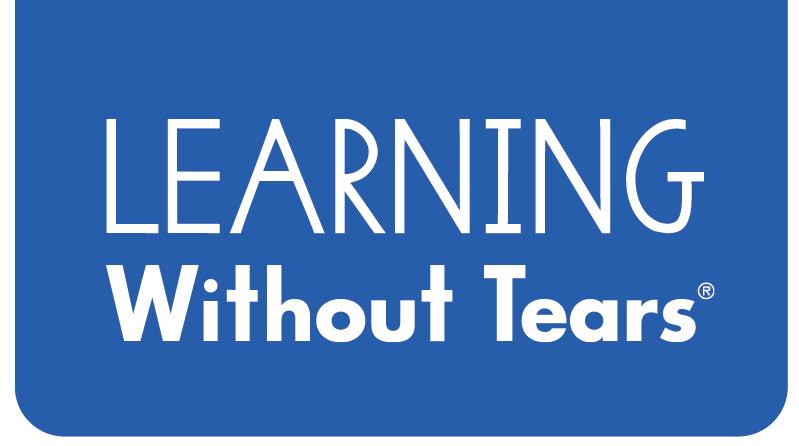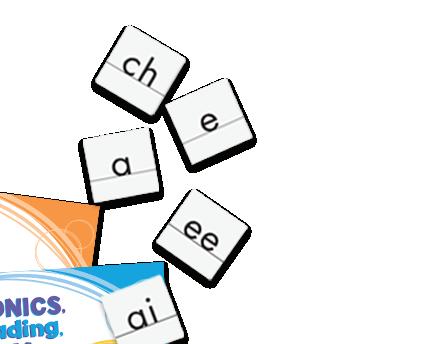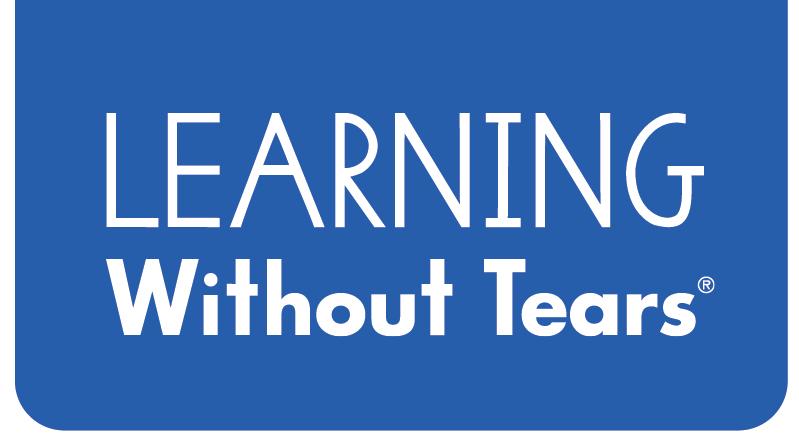ALIGNS TO THE SCIENCE OF READING
Phonics, Reading, and Me™ helps students acquire letter-sound correspondences and language awareness to achieve reading proficiency.
This program is guided by the latest insights from researchers and practitioners, and by decades of research focused on proficient reading and writing development.
Phonics, Reading, and Me uses a systematic approach, moving sequentially from the most high-utility, simple-tocomplex skills as students also grow in reading comprehension (Lyon, 1998; Seidenberg, 2017). Explicit instruction in each lesson efficiently integrates skills and gives students extensive practice in phonics or morphology, phonemic awareness and fluency, decoding, spelling, and responsive writing.
Highly decodable text sets include print books and digital texts, each closely tied to a lesson’s primary skill. The texts in each set and unit are all topically tied to build knowledge (Wexler, 2020). They give students practice using prior skills and high-frequency words.
Systematic, Explicit Instruction
• Scope and sequence from Set A to Set D builds from simple to complex.
• Every lesson gives teachers language to explicitly communicate and model the skill.

• A skill is introduced by the teacher, a small group applies the skills to supported reading of decodable text, and then students practice in pairs or triads and on their own.
Connected Text
Every print book and digital text meets the same principles for skills application.
• 80% decodable; cumulative review.
• Up to 30% of words focus on the primary skill; opportunities to apply new phonics skill.
• Texts include examples of secondary skill.
• Shared vocabulary with knowledge-building words per interconnected skills practice.
Multimodal Practice
• Extensive, varied practice cements skills in working memory.
• Differentiated supports ensure all students grasp the skill.
• Modes of reading: digital, familiar reading with mini books, responsive writing with Reading Response Journal, spelling, and word study with manipulatives.
Interconnected Skills
The program offers a base of skills that lead to comprehension.
READING Comprehension
Phonemic Awareness
• Phonemic awareness is taught specifically and explicitly (Kilpatrick, 2016).
• Warm up in every lesson in Sets A and B prime phonics skills.


• Lessons include articulation support—instruction on how sounds are made, including mouth movements.
Phonics
Focused on orthographic mapping—mapping sounds to letter patterns—and applying phonics skills and decoding skills in words and connected text (Ehri, 2020).
Includes foundational phonics in Sets A and B; advanced phonics in Sets C and D.
Grapheme-phoneme correspondences applied in both phonics (decoding) and spelling (encoding) (Moats, 2005).
Morphology
• Inflectional endings


• Base words and related words
• Roots – Latin and Greek
• Prefixes and suffixes
• Attaching meaning to word parts after students have learned how to decode
Strategies for Reading Words
• Students learn “graphophonological-semantic cognitive flexibility” (Duke & Cartwright, 2021): the ability to actively switch between using knowledge of letter sounds and meaning features of words.


• Students learn tools for reading complex and long words, and apply strategies to read connected text: e.g. find letters and word parts they know, blend the sounds and parts, and flex to try another way until the word sounds like one they know from their oral language (Kearns, 2015).
References
Duke, N. K., & Cartwright, K. B. (2021). The science of reading progresses: Communicating advances beyond the simple view of reading. Reading Research Quarterly, 56, S25-S44. doi:10.1002/rrq.411
Ehri, L. C. (2020). The science of learning to read words: A case for systematic phonics instruction. Reading Research Quarterly, 55, S45-S60. Kearns, D. M. (2015). How elementary-age children read polysyllabic polymorphemic words. Journal of Educational Psychology, 107(2), 364–390.
Kilpatrick, D A., Ph.D. (2016) Equipped for Reading Success: A Comprehensive, Step-By-Step Program for Developing Phoneme Awareness and Fluent Word Recognition. Casey & Kirsch Publishers. Lyon, G. R. (1998). Why reading is not a natural process. Educational Leadership, 55(6), 14-18. Moats, L. C. (2005). How spelling supports reading. American Educator, 6(12–22), 42.


Seidenberg, M. (2017). Language at the speed of sight: How we read, why so many can’t, and what can be done about it. New York, NY: Basic.
Wexler, N. (2020). The Knowledge Gap: The Hidden Cause of America’s Broken Education System--And How to Fix It. Avery.
